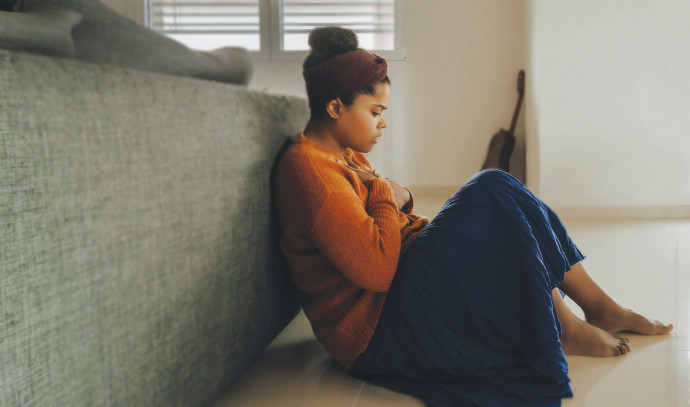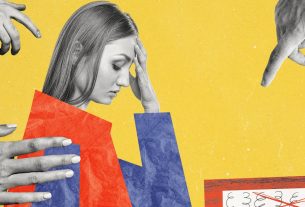|
Getting your Trinity Audio player ready...
|
These days there are fewer and fewer cases of COVID. In fact, I rarely hear of people getting this virus. Nonetheless, the emotional fallout is far from over.
The following study focuses on consequences of COVID restrictions, which include social anxiety. Reuben Kindred and Glen W. Bates, in a comprehensive and systematic global review of forced lockdowns and social distancing during the pandemic and its effect on social anxiety, examined data from over 30 countries, including Israel (International Journal of Environmental Research & Public Health, 2023, vol. 20). They found that COVID has led to acute changes in daily routines and lifestyles worldwide, with the social consequences being detrimental to mental health. For instance, there have been an estimated additional 76.2 million cases of anxiety disorders globally, an increase of over 25%.
Moreover, lockdowns decreased mobility, leading to a reduction in physical activity; social isolation; disruption of school- and work-related activities; reduced peer interaction and learning; and restricted access to (mental) health (J.C. Lokman and C.L. Bockting, The Lancet 9.7, July 2022).
IN MY private practice, personal life, and community life, I have seen how challenging it was for people to come out of the “cave.” People got used to the decrease in social interaction imposed on them.
The pandemic had sent a powerful message that social gatherings were potentially dangerous to one’s health. Some people chose to remain distanced as a result of the ongoing worry about getting the virus, for medical or emotional reasons.
Nevertheless, many people have slowly returned to pre-pandemic work and social activities. Students have gone back to classes, and workers to the office. Yet for people with preexisting social anxiety conditions, the return to social life is more complicated.
Helping those with social anxiety get back to social life
At the outset of COVID, the lockdowns may have come as a relief for individuals who suffer from social anxiety. They did not have to face social gatherings that they wanted to avoid. The fifth edition of the Diagnostic and Statistical Manual of Mental Disorders – Technical Revision indicates that the core component of social anxiety disorder (also called social phobia) is a “marked, or intense, fear or anxiety of social situations in which the individual may be scrutinized by others. The social situations are avoided or endured with an intense fear of anxiety… the fear of anxiety is out of proportion to the actual threat posed by the social situation.”
One client I treated, E., a young woman in her 20s, stays home most of the time, absorbed in her books. The truth is that while she may be a great reader of novels, she has been avoiding social contacts throughout her life. Although she can be described as a loner, she did have some social contacts in the past. E. has an editing job that she does from her home. The very thought of going to a social gathering fills her with the fears of scrutiny, humiliation, and embarrassment. During the pandemic, she stayed isolated and continued reading as her primary escape. E. suffers from both social anxiety and loneliness; her condition only worsened. Now she is asking for help to overcome her social phobia.
Below I describe some of the techniques that have been shown to be most effective in helping people like E.
Cognitive-behavioral therapy
Cognitive-behavioral therapy (CBT) aims at changing maladaptive feelings and behaviors by teaching a client to examine his/her thoughts about the situation. In E.’s case, her anxiety and subsequent avoidant behavior are driven by unhelpful and incorrect thought patterns about social situations.
For example, I asked E. to tell me what she anticipates when she thinks about getting together socially with friends. She stated that people will think that she looks awkward. Although she is attractive and dresses nicely, she had a negative self-perception. We examined the factual evidence that could indicate that she was awkward.
This type of examination is at the core of CBT. Very often, many of these negative thought patterns can be corrected toward a more realistic and balanced view when looked at in therapy. This, in turn, lowers anxiety. E. stated that her dad always told her she was pretty, and that boys had shown interest in her during her high school years. She did not present any facts that proved that she would be seen as awkward.
CBT tries to change the mental filter that skews self-perception to a negative place that intensifies social anxiety.
Constructing a fear hierarchy
One technique that was very effective in helping E. was asking her to construct a fear hierarchy.
I asked her to list several objects or situations that triggered high anxiety for her and rank them from lowest to highest trigger potential. The least anxiety-provoking situations are ordered at the bottom of the hierarchy, while the most anxiety-provoking situations are at the top. Starting with the least anxiety-provoking item, E. was helped to face the situation and gradually habituate to the anxiety.
CBT techniques like those described above, as well as relaxation exercises, helped her gradually overcome her fear. This was also a great time to teach E. some problem-solving skills. We slowly, over a period of two months with weekly therapy, went up to each more challenging level. E. noted that the method was enormously helpful to her.
Visualization and relaxation techniques
I suggested to E. to try to use some interesting mind games to help her relax. I explained that people can psych themselves through a scary experience by envisioning themselves in a way that helps them feel less stressed. I told her to imagine that she was with friends, and they all commented on how great she looked and how happy they were to spend time with her. E. was helped to combine these visualization exercises with a relaxed breathing technique.
CBT and other relaxation skills described above have been scientifically shown to be very efficacious in treating social phobia and related anxiety conditions. ■
The writer is a marital, child and adult cognitive-behavioral psychotherapist with offices in Jerusalem and Ra’anana and global online accessibility. [email protected], www.facebook.com/drmikegropper



